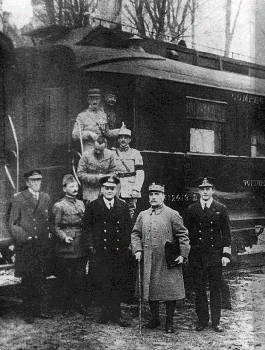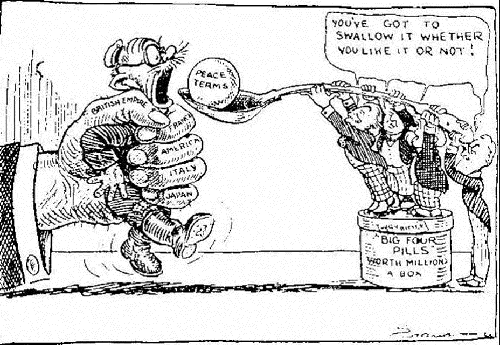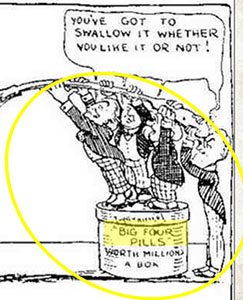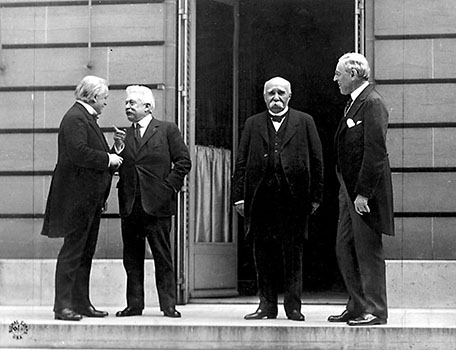Introduction
At the eleventh hour of the eleventh day of the eleventh month of 1918 (November 11, 1918), an armistice ceasing of hostilities was declared to end World War I. The Armistice and acknowledgement that Germany had lost the war was signed in a train car in the French city of Compiegne (you will hear about this train car and city again—watch for it).

After four long years of war, millions of casualties (see World War I casualty statistics at Facing History: WWI Casualty and Death Tables), and great destruction of property, people across Europe were ready for peace. But how would the terms of the peace be established?

Look at the cartoon entitled “The Bitter Pill” below:

What do you think is about to happen? The man who represents Germany
 is about to have to take the pill of “peace terms”
is about to have to take the pill of “peace terms”
 fed to him by the “Big Four.”
fed to him by the “Big Four.”

What words are written on the fingers that are holding onto him?
The Big Four are dictating peace terms to the Germans (known as the “Diktat”). Who were the Big Four? Look at the picture below.

Big Four from left to right:
- David Lloyd George of England,
- Vittorio Orlando of Italy,
- Georges Clemenceau of France (also known as "The Tiger" because of the harsh term he wanted to impose on Germany
- Woodrow Wilson, President of the United States